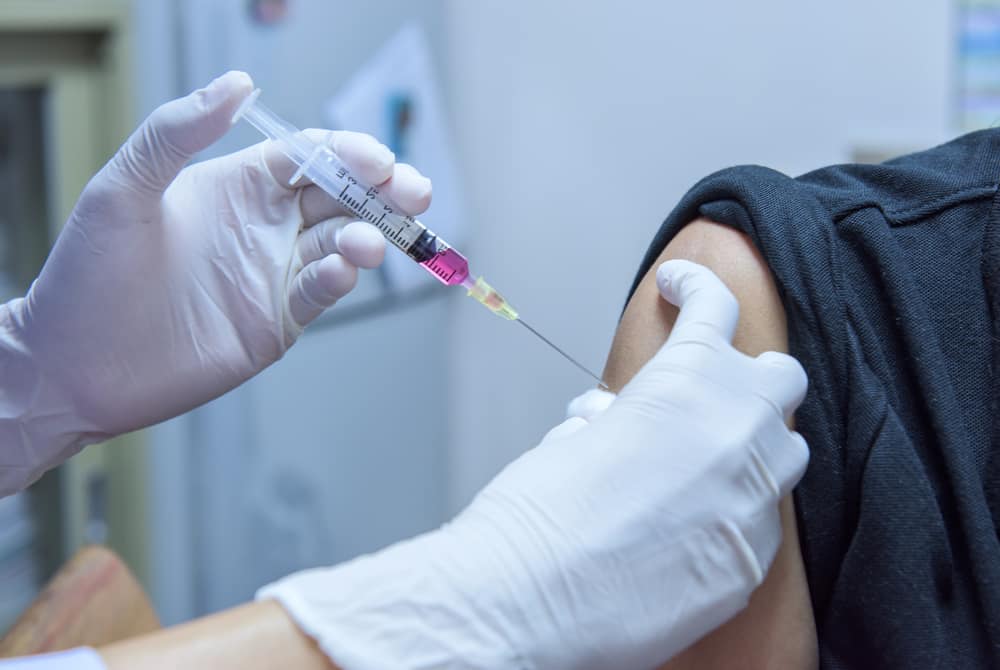Contents:
- Medical Video: Cellular Immunotherapy to Treat Leukemia & Lymphomas: Top 10 Medical Innovations 2017
- What is the difference between lymphoma and leukemia?
- What is the difference between the two symptoms?
- Symptoms of lymphoma
- Symptoms of leukemia
- Both have different risk factors
- Lymphoma
- Leukemia
- The method of diagnosis is also different
Medical Video: Cellular Immunotherapy to Treat Leukemia & Lymphomas: Top 10 Medical Innovations 2017
Maybe you have been with lymphoma and leukemia which are both called blood cancers. Even sometimes there are some symptoms of both that are similar, such as swollen lymph nodes. But actually these two diseases are very different and attack different parts of the body. Both lymphoma and leukemia are more common in men than women. So, how to distinguish these two types of blood cancer? What are the differences in lymphoma and leukemia?
What is the difference between lymphoma and leukemia?
Even though they are both blood cancers, the two causes are of course different. Leukemia occurs when the bone marrow produces too many abnormal white blood cells. This cancer usually grows slowly, but in some cases this disease can also develop quickly.
If someone has leukemia, their abnormal white blood cells accumulate and develop rapidly. This ultimately makes very little space for the red blood cells that the body needs to carry oxygen. Even the number of red blood cells will decrease.
There are four main types of leukemia, grouped according to the level of growth and where the cancer comes from the body. Types of leukemia include:
- Acute myeloblastic leukemia
- Chronic myelocytic leukemia
- Acute lymphoblastic leukemia
- Chronic lymphocytic leukemia
In contrast to lymphoma which affects and starts from lymph nodes and lymphocytes. Lymphocytes are a type of white blood cell. There are two types of lymphocytes, B cells and T cells. There are two main types of lymphoma, namely:
- Hodgkin's lymphoma, which involves an abnormal type of B cell lymphocyte called Red-Sternberg cells. This type includes lymphoma which is less common
- Non-Hodgkin's lymphoma, which can occur in B cells or T cells.
This type of lymphoma will affect the symptoms of each type and determine the treatment options.
What is the difference between the two symptoms?
Although they are both blood cancers, the symptoms of both are also different.
Symptoms of lymphoma
In comparison, lymphoma symptoms vary depending on the type. Symptoms of hodgkin's lymphoma include:
- There is a bulge under the skin, usually in the groin, neck, or armpit
- Fever
- Fatigue
- Night sweats
- Coughing and difficulty breathing
- Severe itching
Symptoms of non-Hodgkin's lymphoma include:
- Enlarged lymph nodes
- Swollen stomach
- Feel full with a little eating
- Fever
- Hard to breathe
- Cough
- Depressed chest and weight loss pain
- Sweating and cold
Symptoms of leukemia
- Easily experience bleeding and blueness (bruising)
- Bleeding from the nose or gums
- Enlarged lymph nodes
- Hard to breathe
- Feel tired
- Fever
- Loss of appetite
- Swelling in the stomach
- Weight loss
- Spots on the skin
- Bone pain
- Excessive sweating, especially at night
Both have different risk factors
Lymphoma
Lymphoma can also occur at any age, non-hodgkin lymphoma can occur in almost any age, whereas hodgkin lymphoma usually occurs between the ages of 15-40 years. Risk factors that include are:
- Family history
- Weakened immune system
- Previous infection with Epstein-Barr virus (EBV)
- HIV infection
Risk factors for non-Hodgkin's lymphoma include:
- Weakened immune system
- Exposure to some chemicals
- Chronic Helicobacter pylori infection
- Previous radiation or chemotherapy
- Autoimmune disease
Leukemia
Acute leukemia is the most common type of cancer in children, while chronic leukemia that often occurs in adults. Anyone who has the opportunity to develop leukemia conditions, some of the risk factors include:
- Genetic disorders
- Family history
- Exposure to certain types of chemicals
- Previous radiation or chemotherapy
- Smoke
The method of diagnosis is also different
Leukemia and lymphoma are diagnosed differently, but both still require recording medical history and physical examination.
To diagnose leukemia, the doctor will do a blood test to look for abnormal blood counts. In addition, the doctor will also do a bone marrow biopsy. In some cases, doctors can also ask for a chromosome test or X-ray or CT scan.
As for diagnosing lymphoma, the doctor will do a biopsy on enlarged lymph nodes in the neck, armpit or groin area. If a lymphoma is suspected from the results of the biopsy, the doctor will also do a follow-up examination such as a bone marrow biopsy or CT scan to determine the stage of the cancer.













